How to Choose the Right Propeller
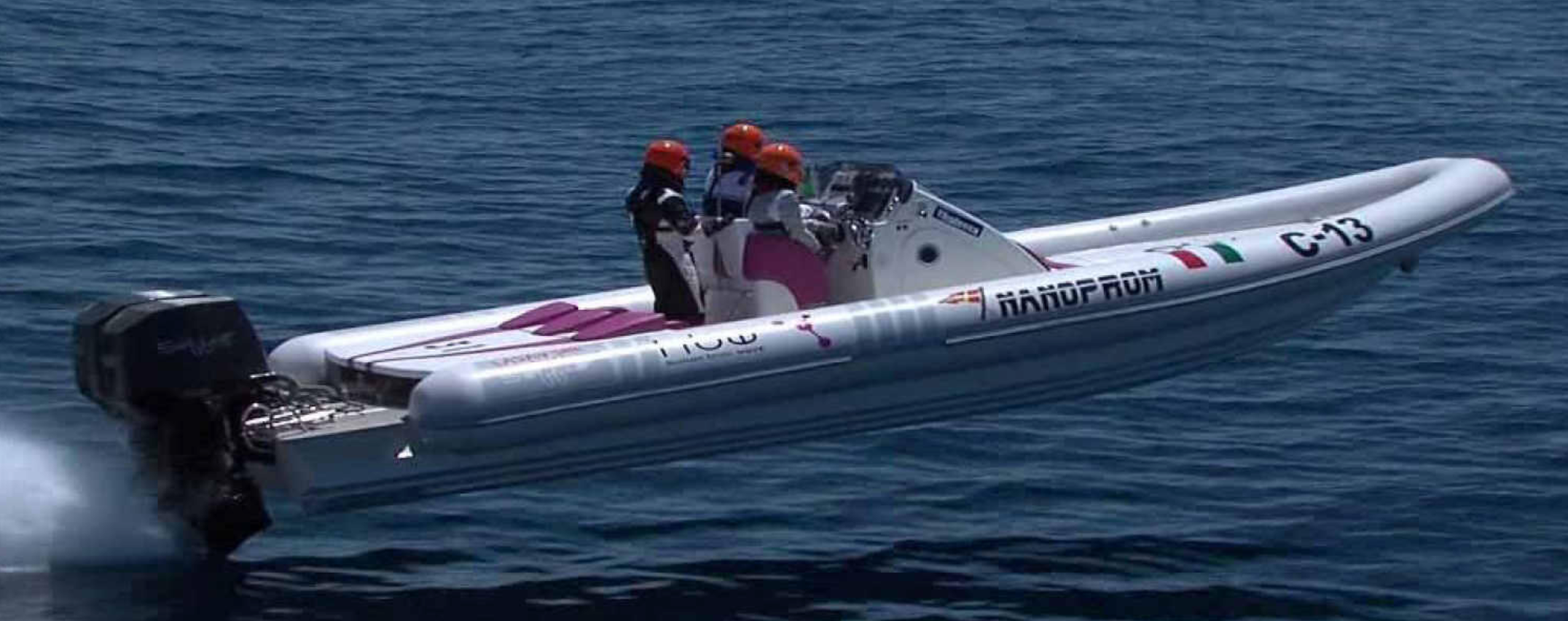
The propeller is one of the most important pieces of equipment when it comes to the impact on a boat’s performance. To achieve optimum performance for a given application, we need to select the right prop and the first thing that must be understood is that one propeller may not provide everything we want. A prop that’s focused on top-end will not accelerate strongly and vice versa. Experienced captains realize that propellers, like many other things on a boat, are most often a compromise. .
Each propeller is designed to perform well under specific conditions. The gear ratio of our engine, the design and the length of the hull, the usual load on board, the mounting height of the engine and the existence of a bracket are some key factors that directly affect the selection of the appropriate propeller.
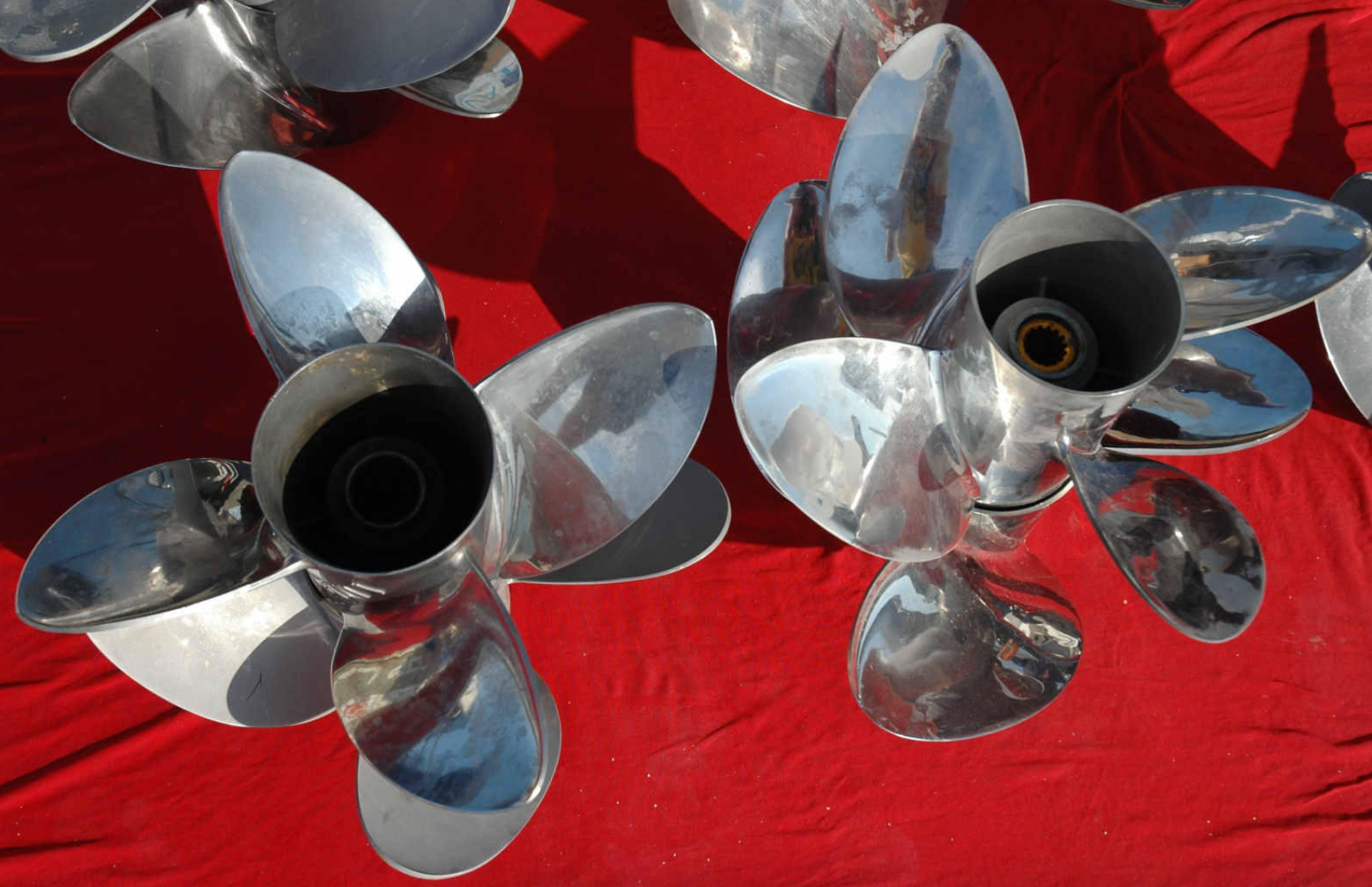
For example, we wouldn’t choose the same propeller for top speed as we would for strong acceleration or good performance in tough sea or for low fuel consumption or maximum cruising speeds at midrange rpm. We would choose still another prop if our goal is to tow wakesports skiers or troll for fish.
Keeping all that in mind, if we don’t want to damage our engine, it must still achieve maximum rpm at wide open throttle.
Real World Tests
There’s only one way to find the right prop and that’s by testing many. Load the boat with the usual gear and head out on a calm day. Push the throttle lever fully forward and then start to trim up the engine. At some point you will hear the familiar sound coming from the propeller ventilates, sucking air into its blades.
This means that if you trim up more, thrust is not produced. Look at the tachometer and you’ll see that no matter how much you trim up the speed will not increase. The engine rpm go up but the speed slows. This is the result of air being pulled into propeller blades and they lose their grip on the water.
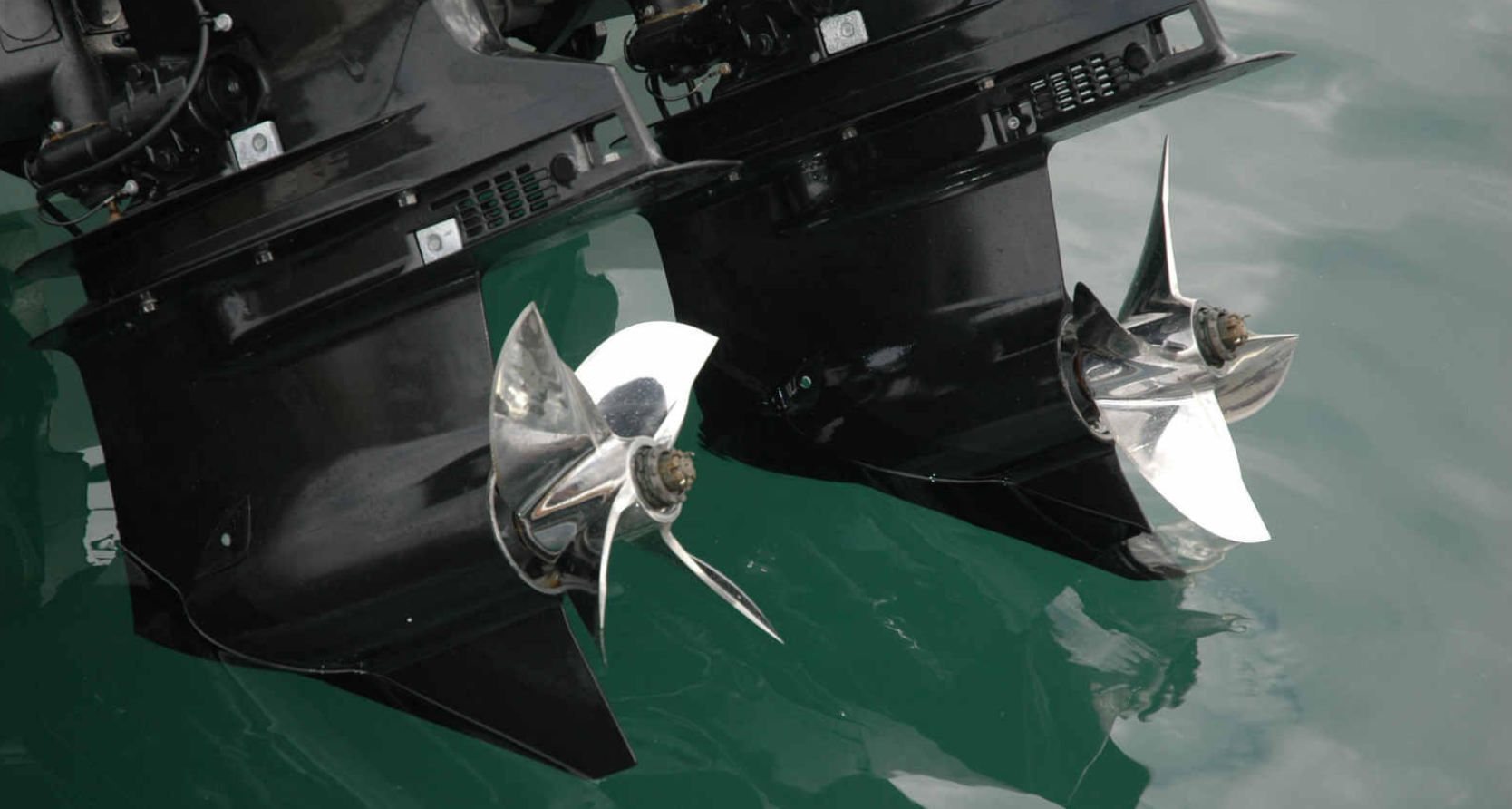
Trim down a little to stop the ventilation stops. Record the rpm and if the engine runs within the specified rpm range at full throttle, the propeller matches with this engine-boat-load combination.
What Should be Remembered?
- Τhe same propeller can’t give us high speed and maximum power. If we will get more thrust, we will lose final speed. If we will get top speed we will lose thrust.
- We will either ride better in rough water or faster in calm seas.
- In a propeller, diameter and pitch work together. We must look for the right pitch in relation to the diameter. In general we can say that the most effective relationship of diameter-pitch is the following:
- Large diameter with a short pitch and
- Small diameter with a long pitch
The best combination of diameter and pitch related to the boat length, our usual loads and the hull design will give us the right balance of thrust and speed.
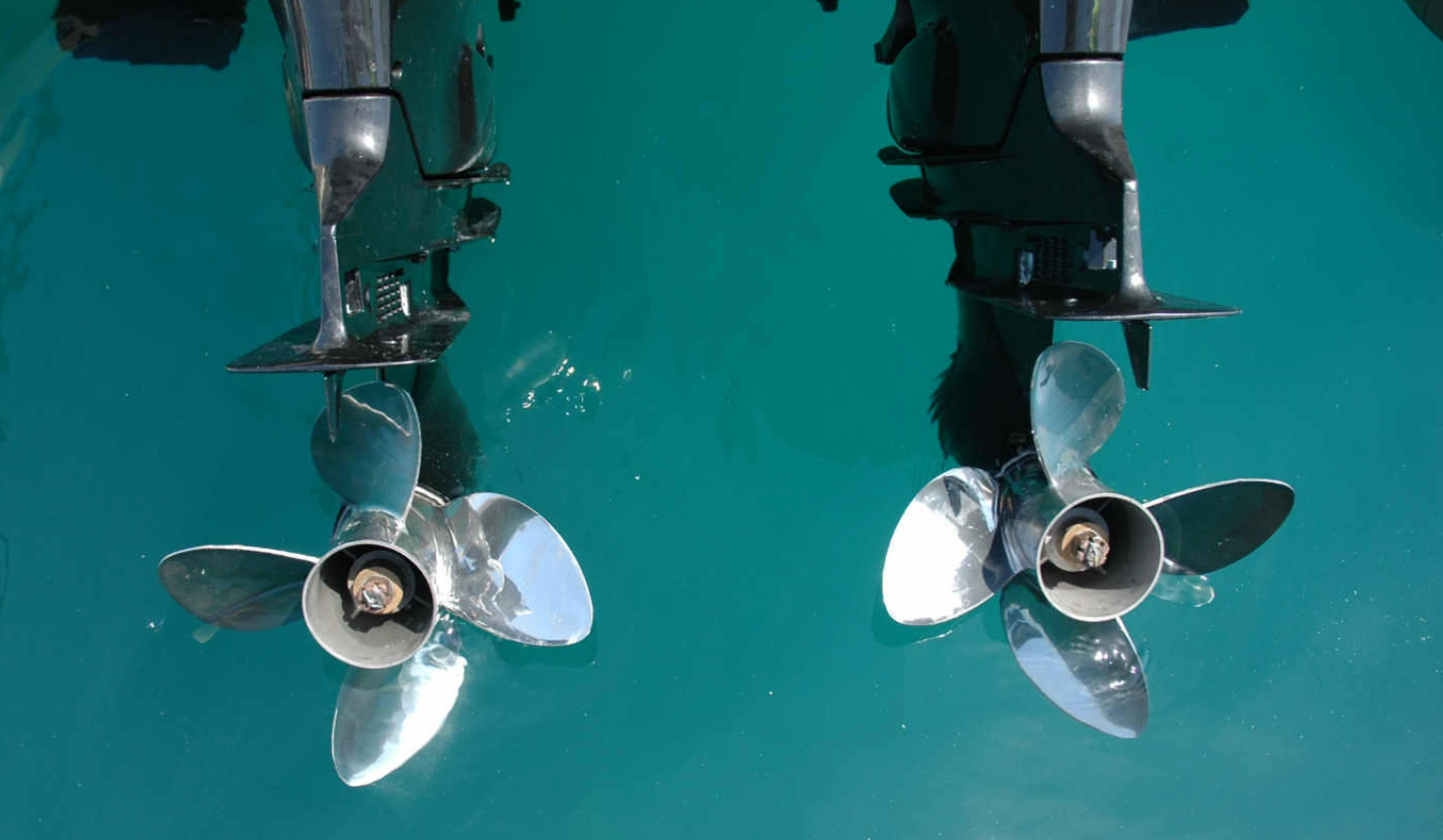
General Rules
- Every inch of pitch accounts for 150 to 200 engine rpm at WOT. Increasing the pitch puts more load on the engine because the propeller "grips" a larger volume of water. The reverse happens when we decrease the pitch. When we increase the pitch by 1” (2.54 cm), we should expect a reduction in a range of 150 to 200 rpm. If we go from a 21” (53.34 cm) pitch propeller to a 19" (48.26 cm) pitch propeller, we expect an increase of 300 to 400 rpm to our engine. When our engine operates below the proper rpm we will fit a propeller with less pitch and vice versa.
- Only 2” (5.08 cm) in pitch is enough to affect performance.
Pitch defines how quickly we will move forward when the propeller is rotated (acceleration).
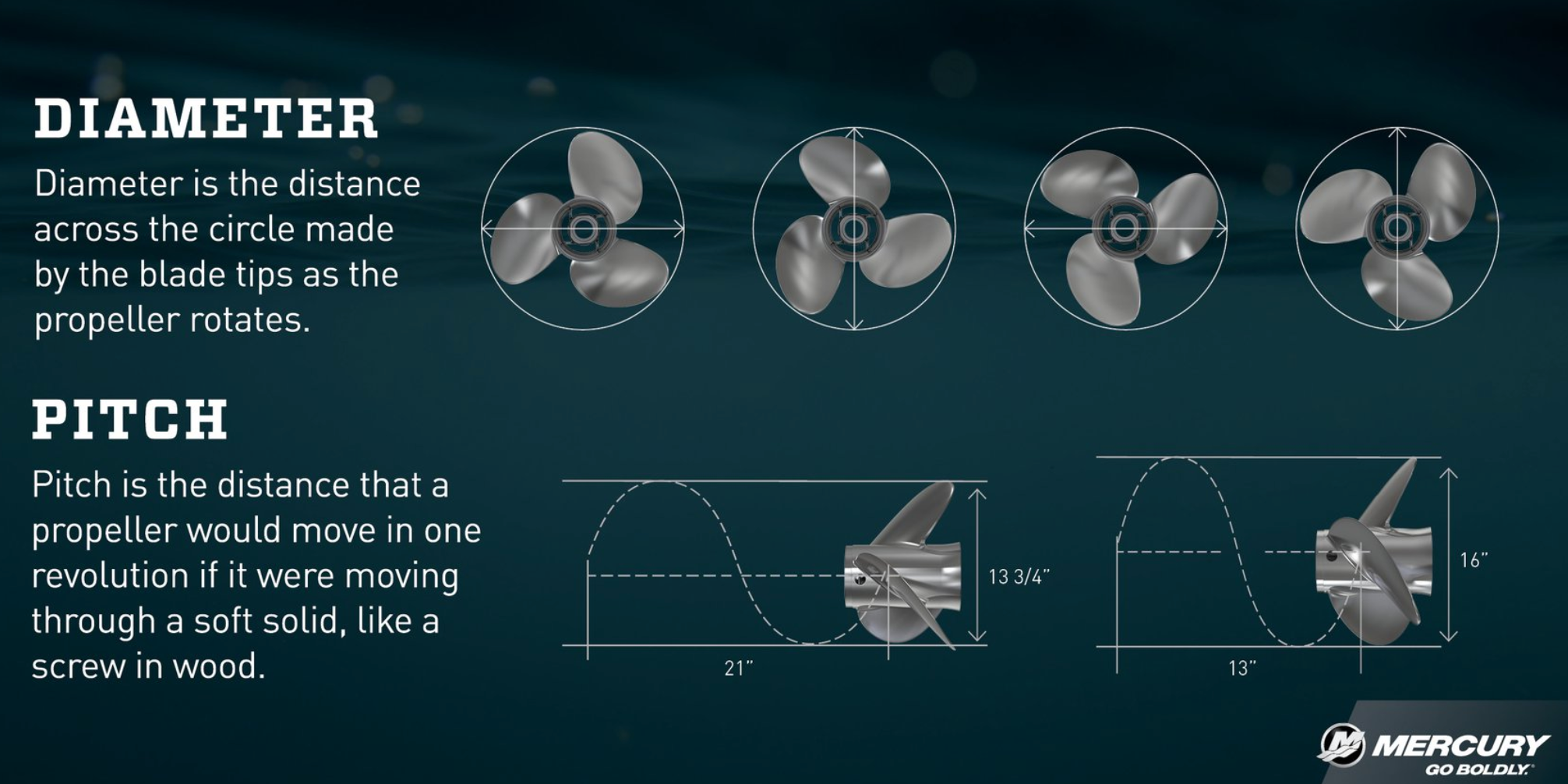
- Pitch is ultimately responsible for the final speed of the boat.
- A propeller with more pitch will push a boat farther in a rotation than one with a lower pitch.
- A propeller with less pitch will push a heavily loaded boat better and will give us better handling in confined spaces.
- When we increase the pitch, we get higher top speed and higher mid-range speeds, but we will have less acceleration longer planing times.
The opposite happens when we decrease the pitch.